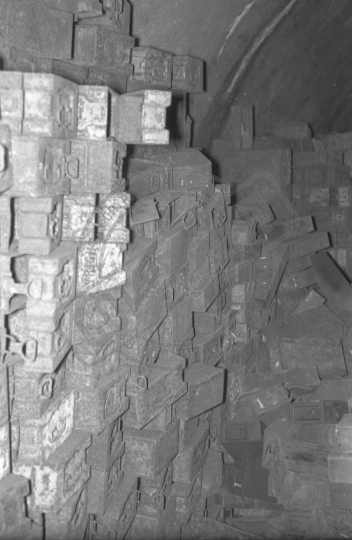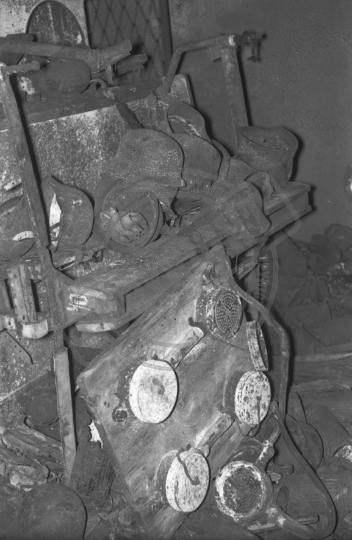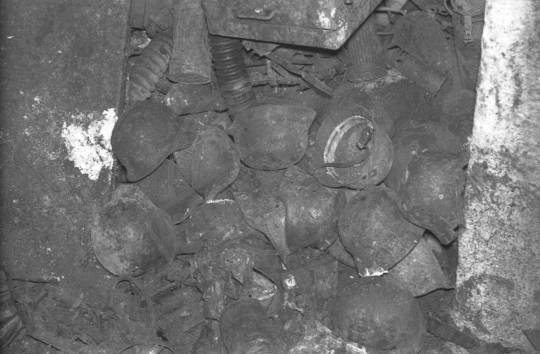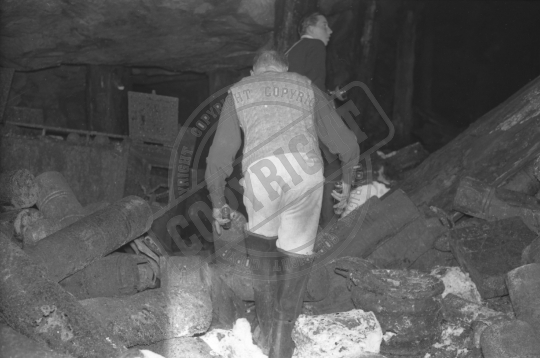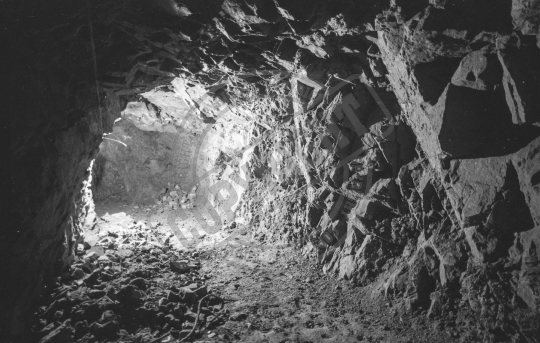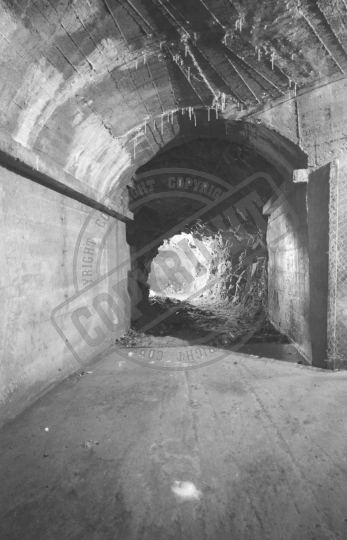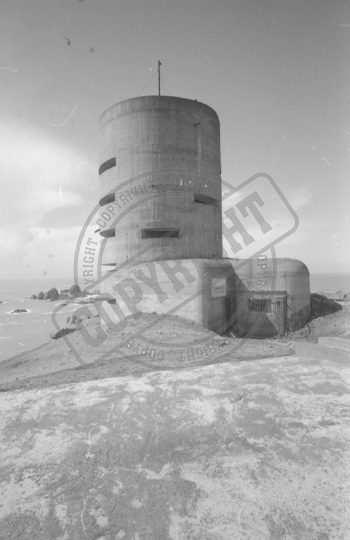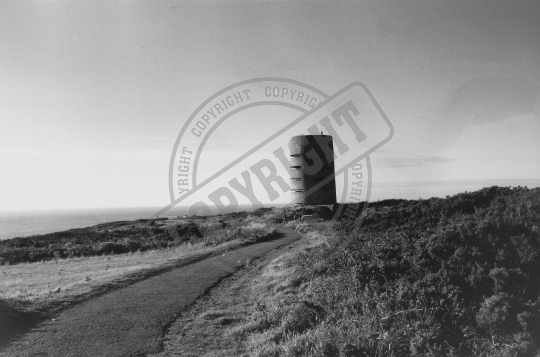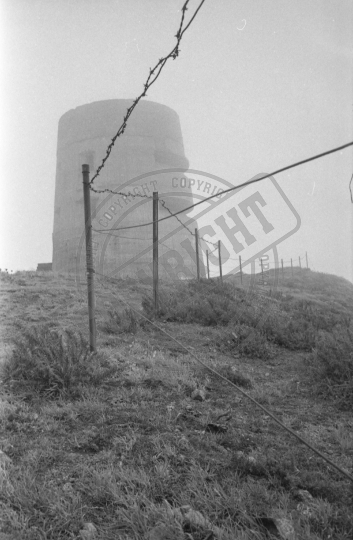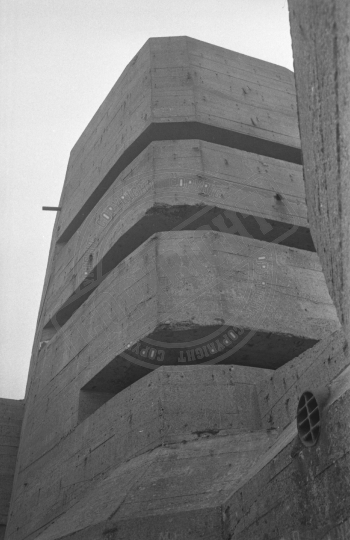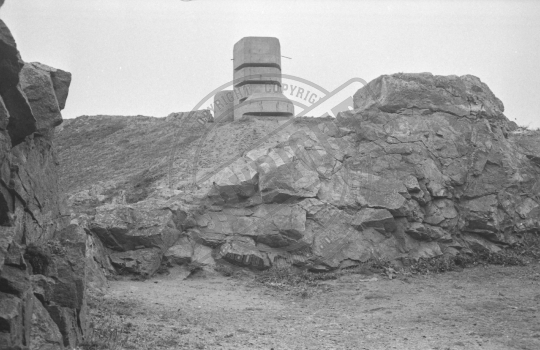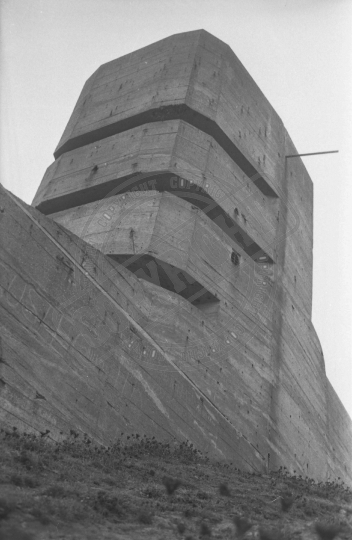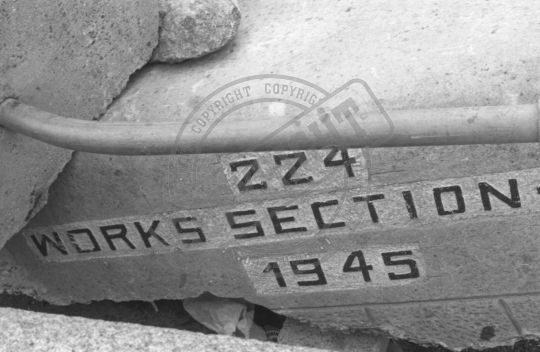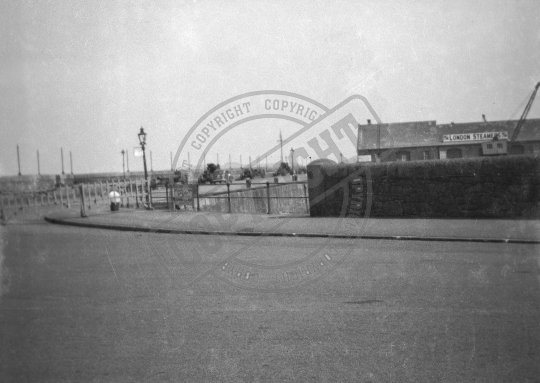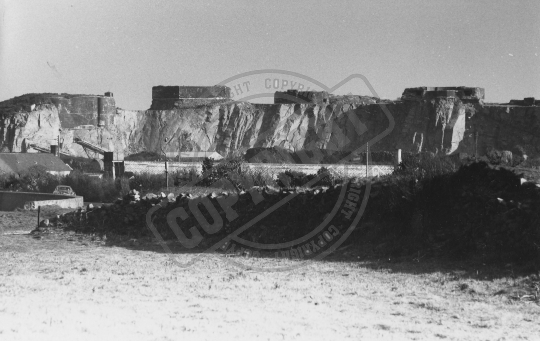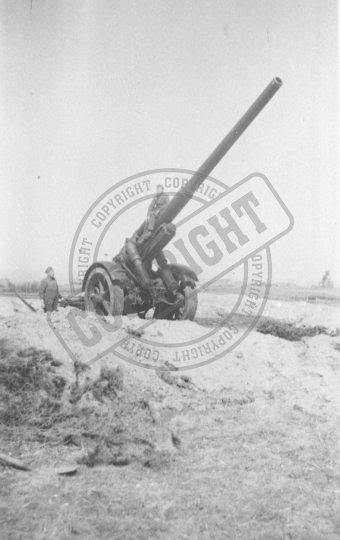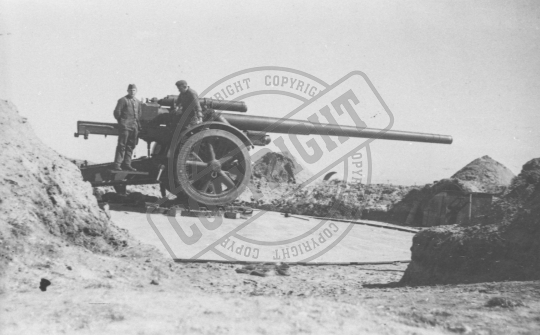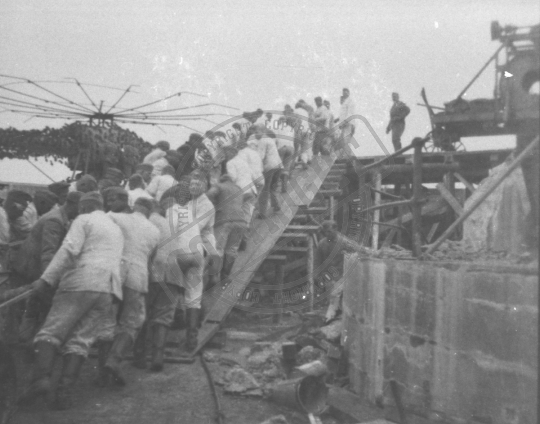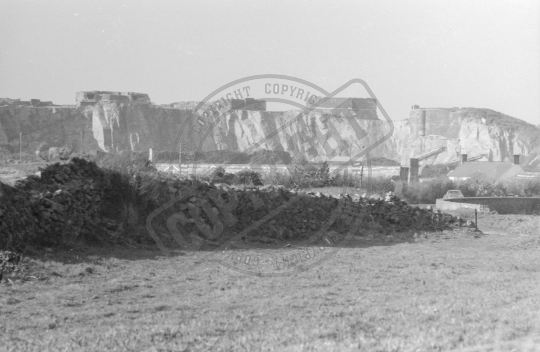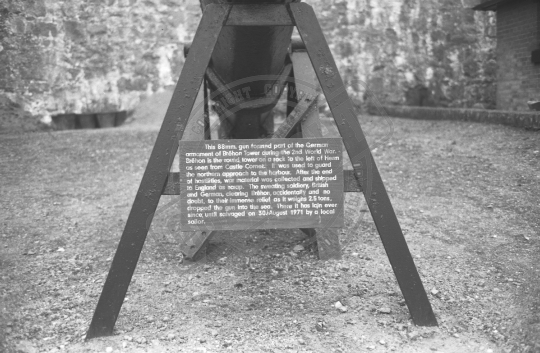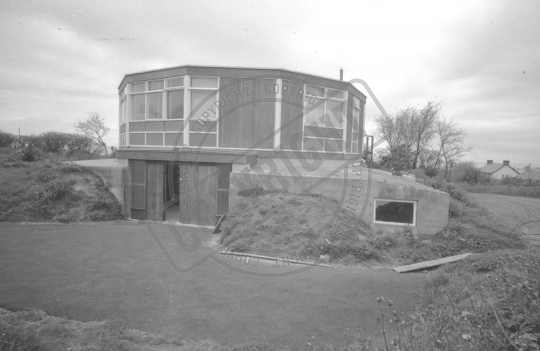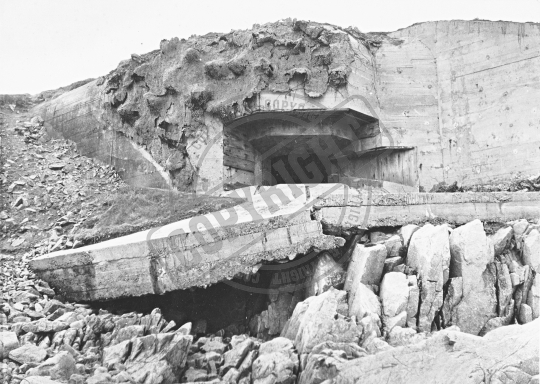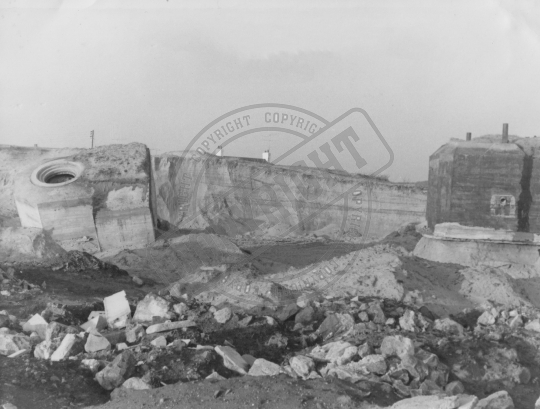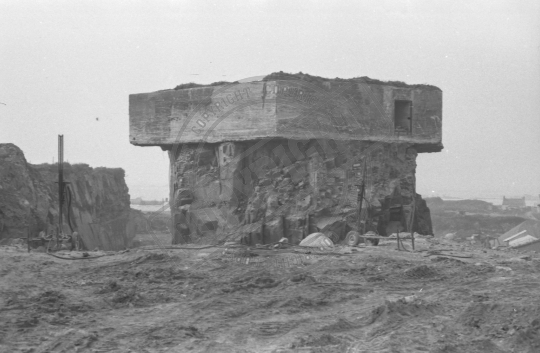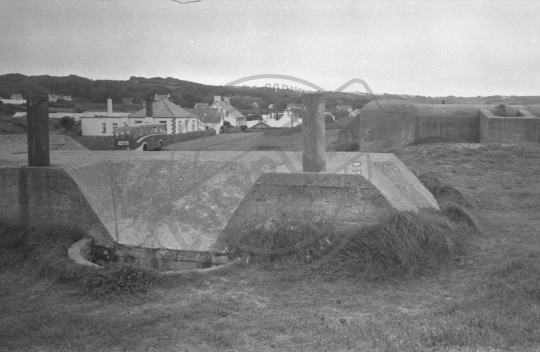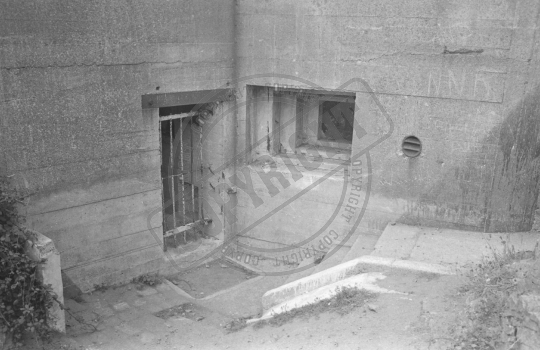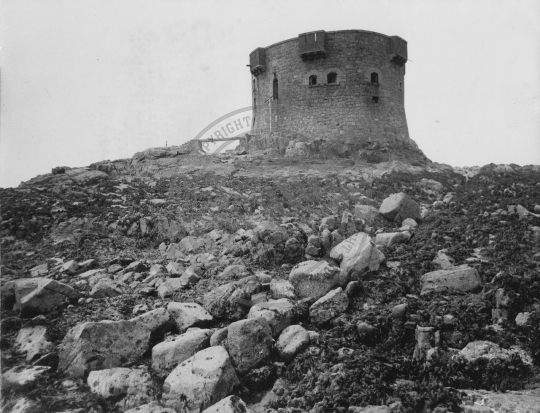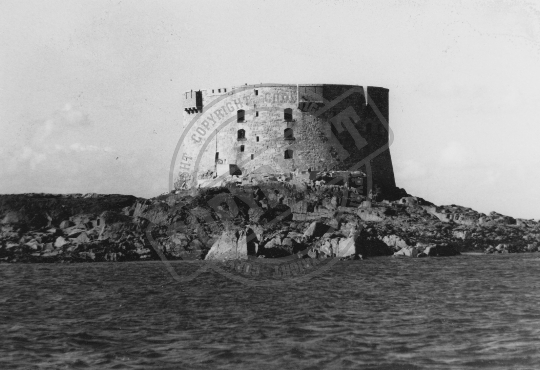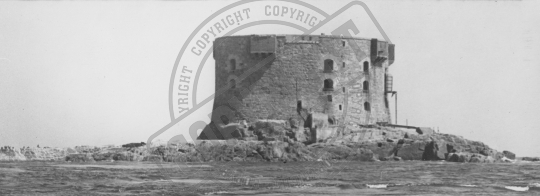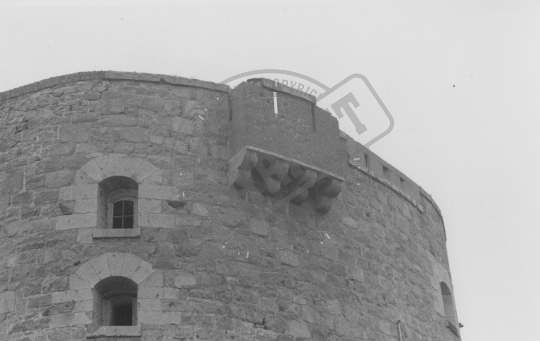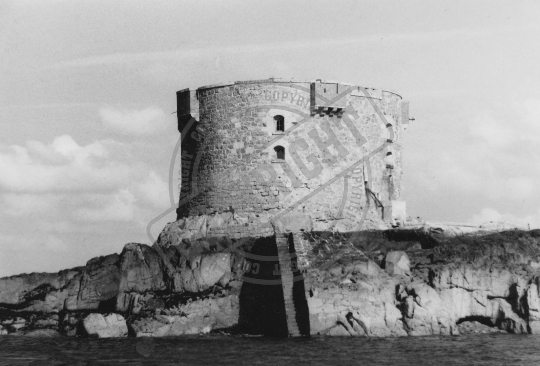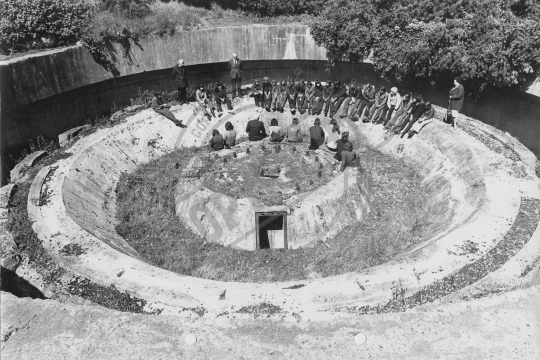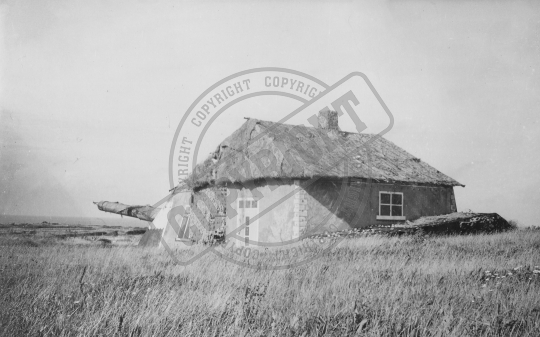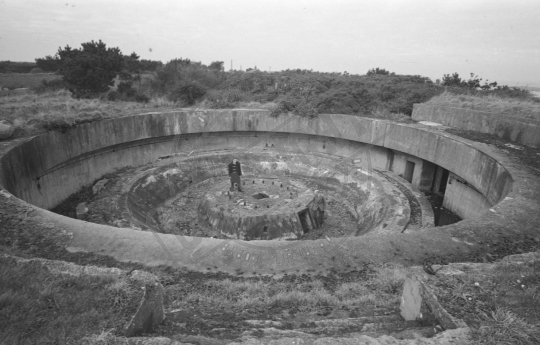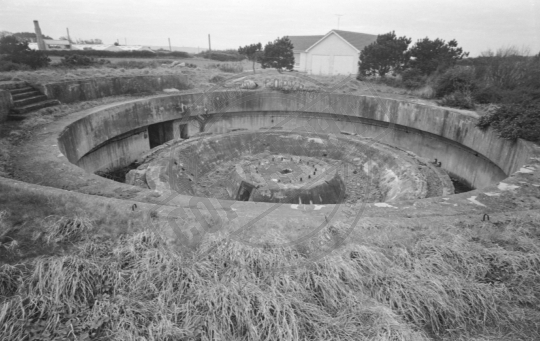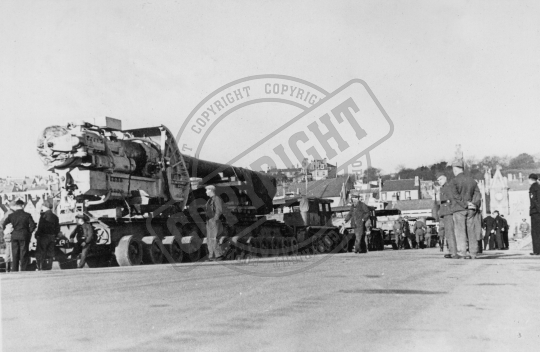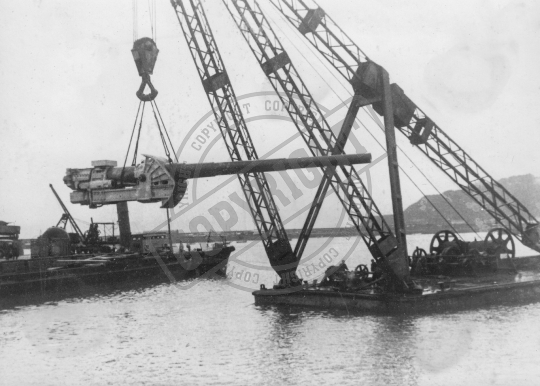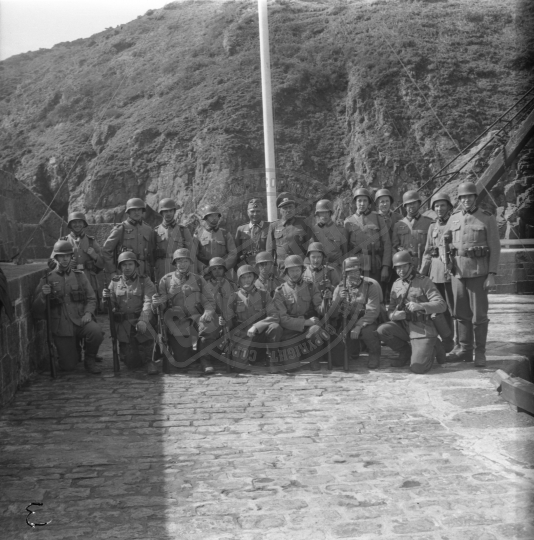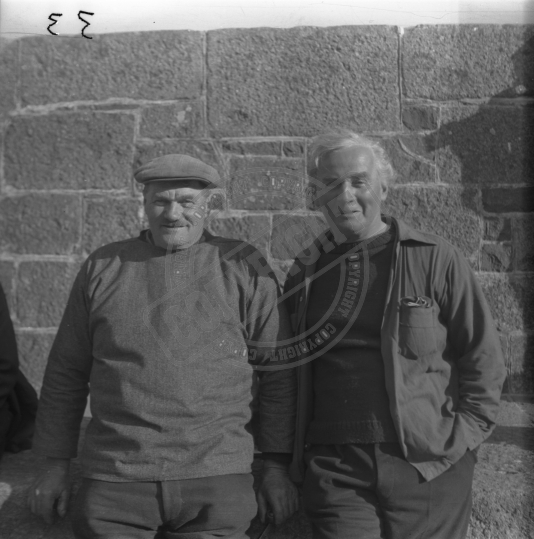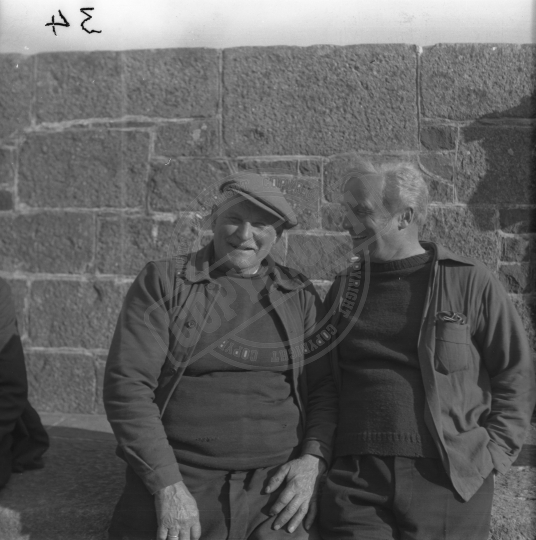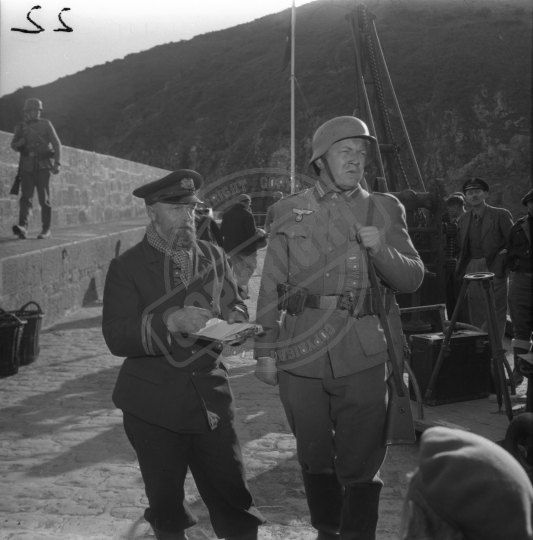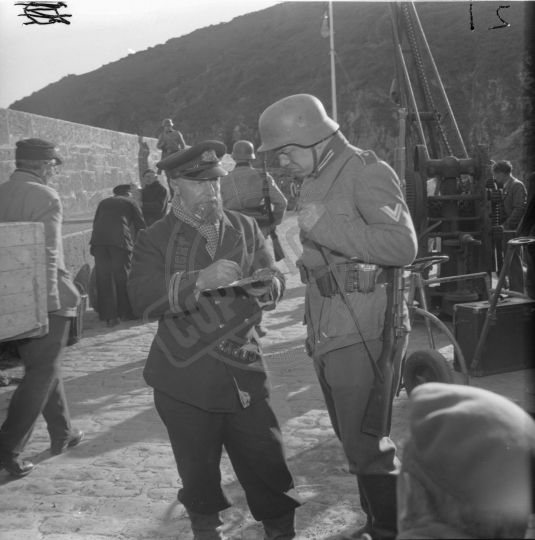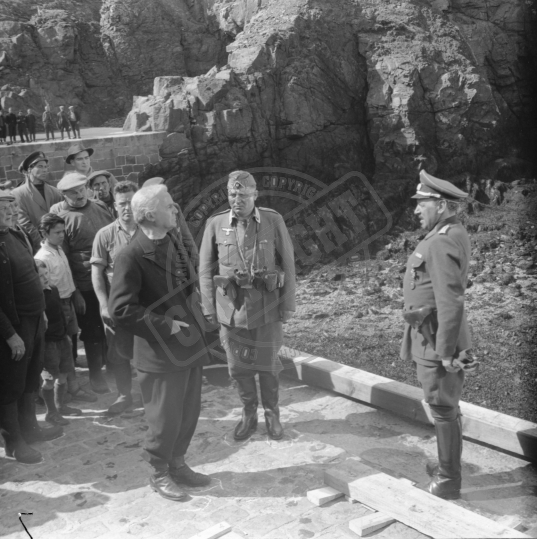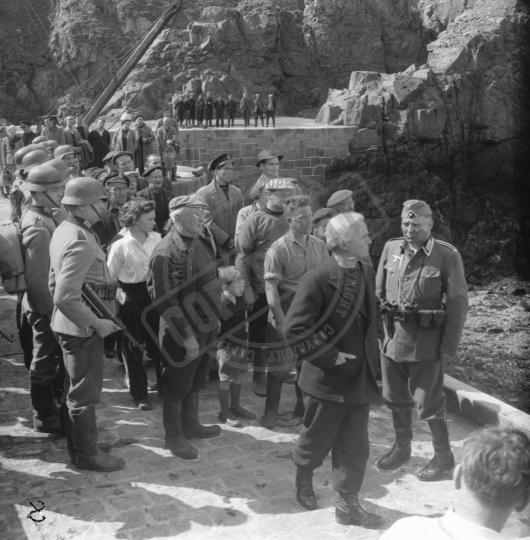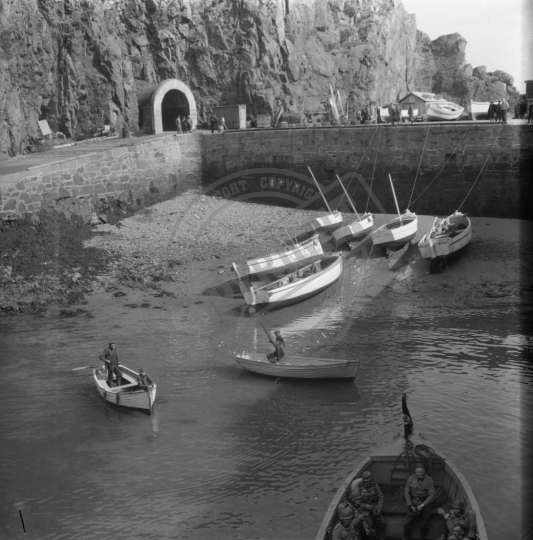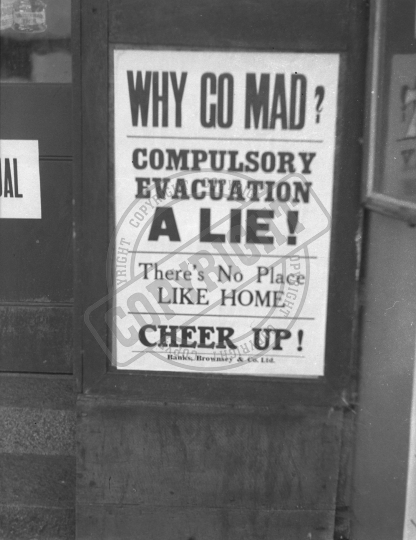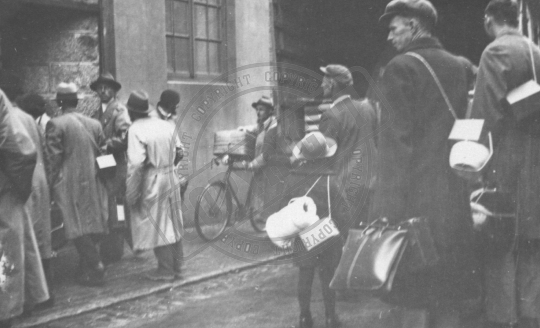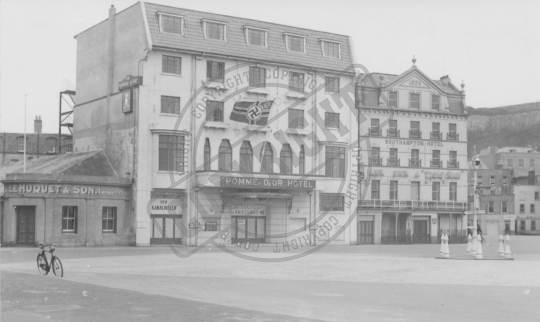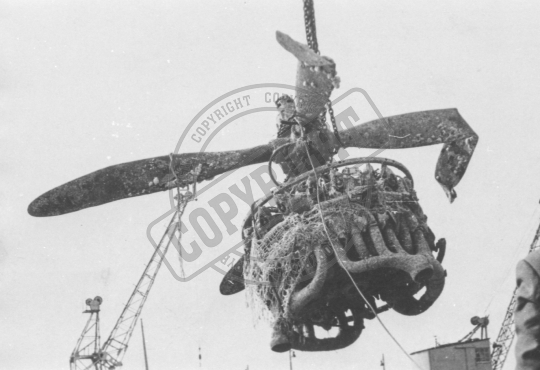Results (210)
TPL_00346
St Saviour`s tunnel which is featured in many publications as 'The tunnel under the church’ is one of the largest German tunnel complexes in Guernsey. This tunnel was originally constructed as a ration store and in 1944 it was converted into a munitions store. On 9th May 1969 Richard Heaume and John Hayes explored the remains of the tunnel and its contents which had captured the interest of many collectors ever since the scrap men had left in the 1950’s.
TPL_00340
St Saviour`s tunnel which is featured in many publications as 'The tunnel under the church’ is one of the largest German tunnel complexes in Guernsey. This tunnel was originally constructed as a ration store and in 1944 it was converted into a munitions store. On 9th May 1969 Richard Heaume and John Hayes explored the remains of the tunnel and its contents which had captured the interest of many collectors ever since the scrap men had left in the 1950’s.
TPL_00339
St Saviour`s tunnel which is featured in many publications as 'The tunnel under the church’ is one of the largest German tunnel complexes in Guernsey. This tunnel was originally constructed as a ration store and in 1944 it was converted into a munitions store. On 9th May 1969 Richard Heaume and John Hayes explored the remains of the tunnel and its contents which had captured the interest of many collectors ever since the scrap men had left in the 1950’s.
TPL_00332
St Saviour`s tunnel which is featured in many publications as 'The tunnel under the church’ is one of the largest German tunnel complexes in Guernsey. This tunnel was originally constructed as a ration store and in 1944 it was converted into a munitions store. On 9th May 1969 Richard Heaume and John Hayes explored the remains of the tunnel and its contents which had captured the interest of many collectors ever since the scrap men had left in the 1950’s.
TPL_00154
Post war photograph inside the large tunnel complex known as the German Underground Hospital in St Andrews showing the unlined section of the tunnel.
TPL_00153
Post war photograph inside the large tunnel complex known as the German Underground Hospital in St Andrews. This section shows the lined to unlined junction of the tunnel.
TPL_00371
Post war photograph of the direction finding tower MP2 at La Corbiere, Jersey. The tower was constructed in reinforced concrete and camouflaged to look like it was constructed in stonework in an effort to resemble one of the many Napoleonic period towers that were sited around Jersey.
TPL_00138
Post war photograph of Army direction finding tower M5 at Le Prevote. The structure was cladded externally with granite sets during the war which has since been removed leaving the bare concrete of the structure exposed.
TPL_00084
Section of concrete inscribed by the British Army with '224 Works Section RE 1945' located at St Peter Port harbour. Note RE is an abbreviation for Royal Engineers.
TPL_00379
The arrival of a 22cm gun battery at the White Rock, St Peter Port ready for transportation to the gun site. The guns could be disassembled into several lighter loads to facilitate movement if heavy tractors were unavailable. Note the anti-landing poles on the granite wall to prevent enemy landings.
TPL_00134
Post war photograph showing several structures of Batterie Steinbruch prior to their removal during the quarry expansion at Les Vardes, St Sampson.
TPL_00131
German naval personnel man-handling a 17cm artillery piece into position at Fort Albert, Alderney.
TPL_00130
Post war photograph showing several structures of Batterie Steinbruch prior to their removal during the quarry expansion at Les Vardes, St Sampson.
TPL_00129
Barrel recovered from Brehon Tower, note that the sign suggests that it is a 88mm gun but is in fact a 10.5cm K331(f) gun.
TPL_00124
The remains of the original camouflage were still visible here on a post war photograph of the 10.5cm K331(f) bunker at Fort Hommet.
TPL_00123
Post war photograph of a mortar position and a personnel bunker which were eventually buried in the sand dunes at L`Eree located between the two car parks. Messrs J&D Norman Ltd had a concession from the States of Guernsey for the removal of sand in the area.
TPL_00120
Post war photograph showing one of the structures of Batterie Steinbruch prior to its removal during the quarry expansion at Les Vardes, St Sampson.
TPL_00114
Post war photograph of a reinforced field order (RFO) personnel bunker which forms part of the defences at Rocquaine, St Peters.
TPL_00087
Post war photograph of Brehon Tower which housed two 2cm Flakvierling anti-aircraft guns on the roof, each weapon comprised of four barrels per gun. The tower also housed a 10.5cm K331(f) gun facing north.
TPL_00107
Batterie Mirus, the largest German installation in the Channel Islands housed four 30.5cm naval guns, this example shows that the Germans camouflaged the structure to look like a cottage.
CIMM_0023
With the Mirus barrel loaded on to a 48-wheel trailer the convoy of halftracks is preparing to leave the Cambridge berth and head across the island to the construction site. Batterie Mirus was the largest German installation in the Channel Islands and housed four 30.5cm naval guns.
CIMM_0021
The floating crane Antee lifts the huge barrel of Batterie Mirus at the Cambridge berth in St Peter Port. Batterie Mirus was the largest German installation in the Channel Islands and housed four 30.5cm naval guns.
TPL_00052
Filming of 'Appointment with Venus’ on the Channel Island of Sark. The plot is set during the outbreak of WWII when the Ministry of Agriculture and the War Office join forces to launch a daring mission to rescue a highly lucrative pedigree cow, Venus, from the German-occupied Channel Island of Armorel. English Army Major Valentine Moreland (David Niven), his A.T.S. assistant Nicola Fallaize (Glynis Johns), radio operator Forbes (Patric Doonan) and ship’s pilot Trawler Langley (Noel Purcell) are dispatched to the small island to rescue Venus. Problems arise when the German commander on Armorel, Weiss (George Coulouris), also discovers the cow’s value and intends to evacuate Venus back to Germany. The film went on general release in 1951.
TPL_00044
Filming of 'Appointment with Venus’ on the Channel Island of Sark. The plot is set during the outbreak of WWII when the Ministry of Agriculture and the War Office join forces to launch a daring mission to rescue a highly lucrative pedigree cow, Venus, from the German-occupied Channel Island of Armorel. English Army Major Valentine Moreland (David Niven), his A.T.S. assistant Nicola Fallaize (Glynis Johns), radio operator Forbes (Patric Doonan) and ship’s pilot Trawler Langley (Noel Purcell) are dispatched to the small island to rescue Venus. Problems arise when the German commander on Armorel, Weiss (George Coulouris), also discovers the cow’s value and intends to evacuate Venus back to Germany. The film went on general release in 1951.
TPL_00043
Filming of 'Appointment with Venus’ on the Channel Island of Sark. The plot is set during the outbreak of WWII when the Ministry of Agriculture and the War Office join forces to launch a daring mission to rescue a highly lucrative pedigree cow, Venus, from the German-occupied Channel Island of Armorel. English Army Major Valentine Moreland (David Niven), his A.T.S. assistant Nicola Fallaize (Glynis Johns), radio operator Forbes (Patric Doonan) and ship’s pilot Trawler Langley (Noel Purcell) are dispatched to the small island to rescue Venus. Problems arise when the German commander on Armorel, Weiss (George Coulouris), also discovers the cow’s value and intends to evacuate Venus back to Germany. The film went on general release in 1951.
TPL_00038
Filming of 'Appointment with Venus’ on the Channel Island of Sark. The plot is set during the outbreak of WWII when the Ministry of Agriculture and the War Office join forces to launch a daring mission to rescue a highly lucrative pedigree cow, Venus, from the German-occupied Channel Island of Armorel. English Army Major Valentine Moreland (David Niven), his A.T.S. assistant Nicola Fallaize (Glynis Johns), radio operator Forbes (Patric Doonan) and ship’s pilot Trawler Langley (Noel Purcell) are dispatched to the small island to rescue Venus. Problems arise when the German commander on Armorel, Weiss (George Coulouris), also discovers the cow’s value and intends to evacuate Venus back to Germany. The film went on general release in 1951.
TPL_00033
Filming of 'Appointment with Venus’ on the Channel Island of Sark. The plot is set during the outbreak of WWII when the Ministry of Agriculture and the War Office join forces to launch a daring mission to rescue a highly lucrative pedigree cow, Venus, from the German-occupied Channel Island of Armorel. English Army Major Valentine Moreland (David Niven), his A.T.S. assistant Nicola Fallaize (Glynis Johns), radio operator Forbes (Patric Doonan) and ship’s pilot Trawler Langley (Noel Purcell) are dispatched to the small island to rescue Venus. Problems arise when the German commander on Armorel, Weiss (George Coulouris), also discovers the cow’s value and intends to evacuate Venus back to Germany. The film went on general release in 1951.
TPL_00032
Filming of 'Appointment with Venus’ on the Channel Island of Sark. The plot is set during the outbreak of WWII when the Ministry of Agriculture and the War Office join forces to launch a daring mission to rescue a highly lucrative pedigree cow, Venus, from the German-occupied Channel Island of Armorel. English Army Major Valentine Moreland (David Niven), his A.T.S. assistant Nicola Fallaize (Glynis Johns), radio operator Forbes (Patric Doonan) and ship’s pilot Trawler Langley (Noel Purcell) are dispatched to the small island to rescue Venus. Problems arise when the German commander on Armorel, Weiss (George Coulouris), also discovers the cow’s value and intends to evacuate Venus back to Germany. The film went on general release in 1951.
TPL_00031
Filming of 'Appointment with Venus’ on the Channel Island of Sark. The plot is set during the outbreak of WWII when the Ministry of Agriculture and the War Office join forces to launch a daring mission to rescue a highly lucrative pedigree cow, Venus, from the German-occupied Channel Island of Armorel. English Army Major Valentine Moreland (David Niven), his A.T.S. assistant Nicola Fallaize (Glynis Johns), radio operator Forbes (Patric Doonan) and ship’s pilot Trawler Langley (Noel Purcell) are dispatched to the small island to rescue Venus. Problems arise when the German commander on Armorel, Weiss (George Coulouris), also discovers the cow’s value and intends to evacuate Venus back to Germany. The film went on general release in 1951.
TPL_00028
Filming of 'Appointment with Venus’ on the Channel Island of Sark. The plot is set during the outbreak of WWII when the Ministry of Agriculture and the War Office join forces to launch a daring mission to rescue a highly lucrative pedigree cow, Venus, from the German-occupied Channel Island of Armorel. English Army Major Valentine Moreland (David Niven), his A.T.S. assistant Nicola Fallaize (Glynis Johns), radio operator Forbes (Patric Doonan) and ship’s pilot Trawler Langley (Noel Purcell) are dispatched to the small island to rescue Venus. Problems arise when the German commander on Armorel, Weiss (George Coulouris), also discovers the cow’s value and intends to evacuate Venus back to Germany. The film went on general release in 1951.
TPL_00027
An unauthorised poster which had a certain calming effect on the population of Guernsey during the height of the evacuation crisis period.
TPL_00024
June 1940 saw the evacuation of many civilians, note the gas masks being carried as part of the preparations for attack.
TPL_00017
The Pomme d’Or Hotel at the Weighbridge, St Helier, Jersey was the Headquarters of the Hafenkommandant (Senior German Naval Officer). This is where the Bailiff Alexander Coutanche met Generalmajor Wulf the Island Commander at 12 o’clock on 9th May 1945 and escorted him to an awaiting German pinnace at the harbour and out to HMS Beagle anchored in St Aubin’s Bay to meet with Brigadier Snow and the other British representatives.
TPL_00001
The Pratt and Whitney R-2800-5 double Wasp engine from a B26 Marauder found south of Guernsey, 15 March 1962.



